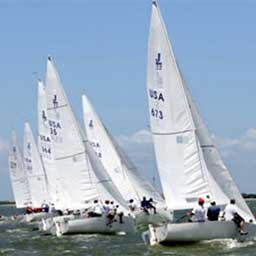The practice of good seamanship plays a significant role in all of US Sailing’s instructional curriculum.
A good sailor knows more than just the mechanics of sail trim and steering, and good seamanship is more than the ability to perform those tasks. Competent sailors know how to handle the boat and sails in a wide range of wind and sea conditions, skills that require practice and experience.
Safety also plays a vital role in good seamanship. Knowing how to handle dangerous situations on the water, even when you are not sailing, will save lives.
Boat maintenance, mooring and docking, lifejackets and safety equipment, procedures and protocols, effective communications, proper planning, safeguarding our environment, and Navigation Rules are all considered areas that help cultivate good seamanship. Courtesy on the water makes sailing more fun for everyone.
With the rash of high profile fatal accidents in sailing between 2011 – 2014, most of what went wrong can’t be pointed at the principles of “safety” but rather “seamanship.” Seamanship recommends staying away from a leeshore. Seamanship recommends plotting your course on a chart and then double checking if there are obstacles on that path. Seamanship recommends assuring that your anchor can be deployed in the depths shown on your chart when approaching a lee shore. Seamanship recommends that the stability factor of your boat is satisfactory for daylight or overnight sailing.
We recommend the reading of any Seamanship book.
The US Sailing Safety at Sea Committee’s very own John Rousmaniere wrote “The Annapolis Book of Seamanship.” The long running “Chapman Piloting & Seamanship” is found in many sailor’s libraries. Or this search can help you pick one.











